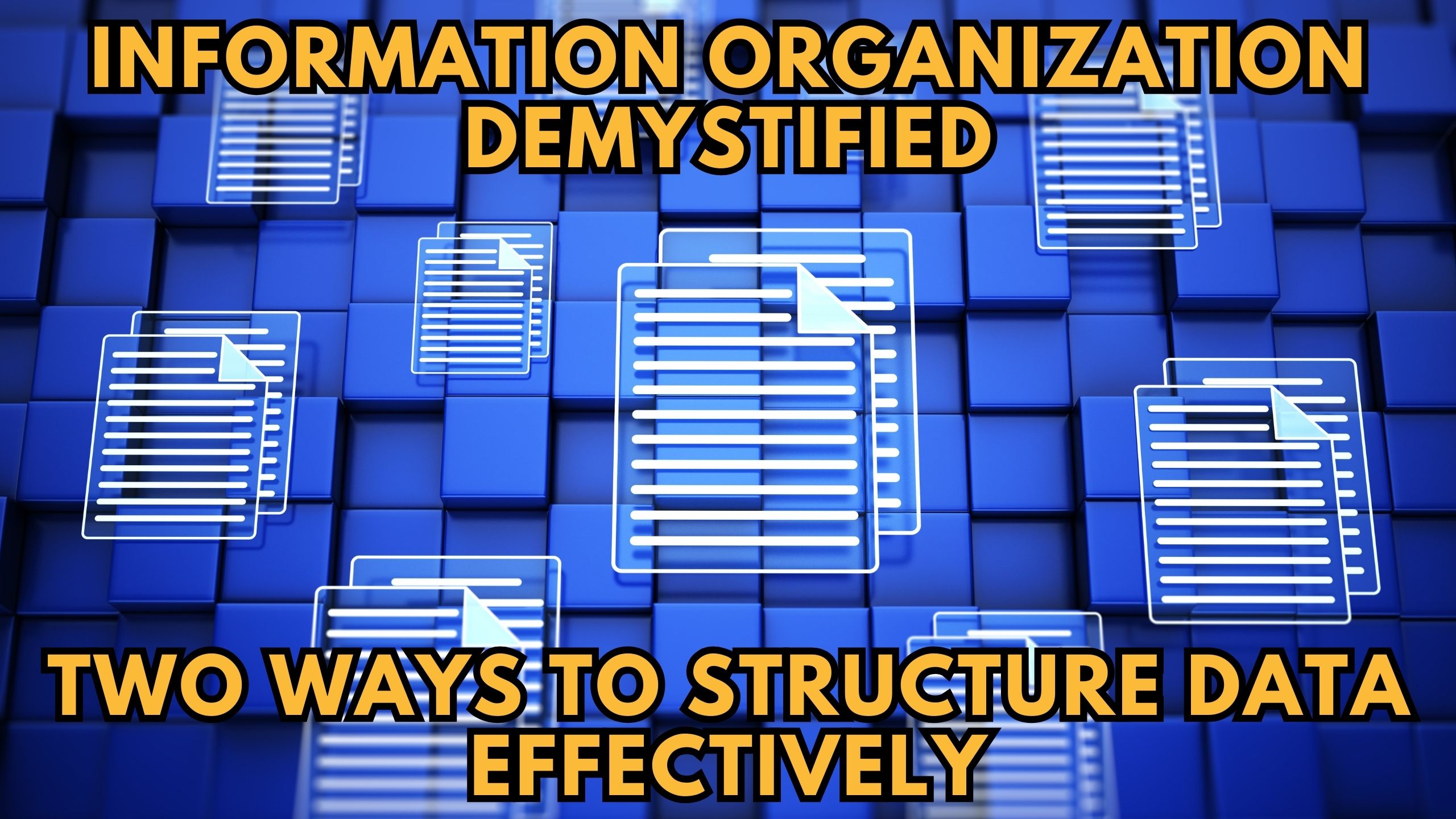Information Organization Demystified: Two Ways to Structure Data Effectively
- Data as a Service (DaaS) Software Marketing & Analytics


Information Organization Demystified: Two Ways to Structure Data Effectively
In the dynamic world of data management, businesses are continually grappling with the challenge of efficiently organizing information. This comprehensive guide aims to demystify the intricacies of information organization by delving into two highly effective approaches. Whether you’re a burgeoning small business seeking streamlined data structures or a freelancer navigating diverse information types, understanding these methodologies can significantly elevate your data management capabilities.
Hierarchical Organization: Unveiling Layers of Clarity
Introduction to Hierarchical Organization
Hierarchical organization stands out as a foundational method, involving the structuring of data in a tiered or tree-like format. Each level represents a distinct category or subcategory, offering a clear and intuitive structure for users to navigate seamlessly. The hierarchical approach has proven its versatility across various industries, providing a robust foundation for data organization.
Benefits of Hierarchical Organization
- Intuitive Navigation: Users find it easy to locate and access information by following a logical path within the hierarchical structure.
- Scalability: The layered approach accommodates the growth of data by allowing the addition of new layers or categories, ensuring scalability over time.
- Clear Hierarchy: The structured layers inherently reflect the relationships between different data elements, fostering clarity.
Practical Implementation
For instance, consider a project management scenario. Data could be organized hierarchically with top-level categories for projects, followed by subcategories for tasks, milestones, and documents. This approach provides a visual and structured representation of the project’s components.
Challenges and Considerations
While hierarchical organization excels in many aspects, it may face challenges in handling highly interconnected or fluid data relationships. Striking the right balance in structuring the hierarchy is crucial to ensure optimal usability and clarity.
Tagging and Metadata: The Power of Associative Links
Introduction to Tagging and Metadata
In contrast to the rigid structure of hierarchical organization, tagging involves assigning descriptive keywords or metadata to each piece of information. This method introduces flexibility by allowing multiple tags for each item, facilitating cross-referencing and searchability. Tagging is particularly advantageous in environments where data relationships are dynamic and may evolve over time.
Benefits of Tagging and Metadata
- Flexibility: Items can be associated with multiple tags, allowing for diverse categorizations based on different criteria.
- Search Efficiency: Users can swiftly retrieve information by searching for relevant tags, bypassing the need for a predefined structure.
- Adaptability: Particularly well-suited for environments where data relationships are fluid, allowing for quick adaptation to changing needs.
Practical Implementation
Consider a content management scenario where articles are tagged with descriptors such as “technology,” “marketing,” and “tutorials.” This tagging system enables users to find content based on specific attributes, regardless of its position in a predefined hierarchy.
Challenges and Considerations
While tagging provides unparalleled flexibility, maintaining consistency in tagging practices is crucial. Without proper governance, the system may lead to redundancy or inconsistency in tagging, impacting search accuracy.
Relevant SaaS Products for Effective Data Management:
- Airtable: A versatile collaboration platform that combines the simplicity of a spreadsheet with the complexity of a database.
- Trello: An intuitive project management tool that uses boards, lists, and cards to help teams organize and prioritize tasks.
- Evernote: A note-taking app with robust organizational features, allowing users to tag and categorize notes for easy retrieval.
- Miro: A collaborative online whiteboard platform that enables teams to visualize and organize ideas in a flexible digital space.
- Zapier: An automation tool that connects various apps and automates workflows, enhancing data flow and organization.
Conclusion: Tailoring Information Structures to Your Needs
In the vast realm of data organization, there is no one-size-fits-all solution. The effectiveness of hierarchical organization and tagging/metadata depends on the nature of your data and your specific use case. Often, a hybrid approach that combines these methods offers the most versatile solution. Businesses must carefully evaluate their requirements and the nature of their data to determine the most suitable approach.
Transform Your Data Management with Subscribed.fyi
Now that you’ve explored these effective data organization methods, take the next step in optimizing your data management. Subscribed.fyi is your ultimate solution. Sign up today to unlock exclusive deals on SaaS tools that streamline information organization. From project management to content creation, Subscribed.fyi empowers you to make informed decisions about the tools you need.
Relevant Links:





